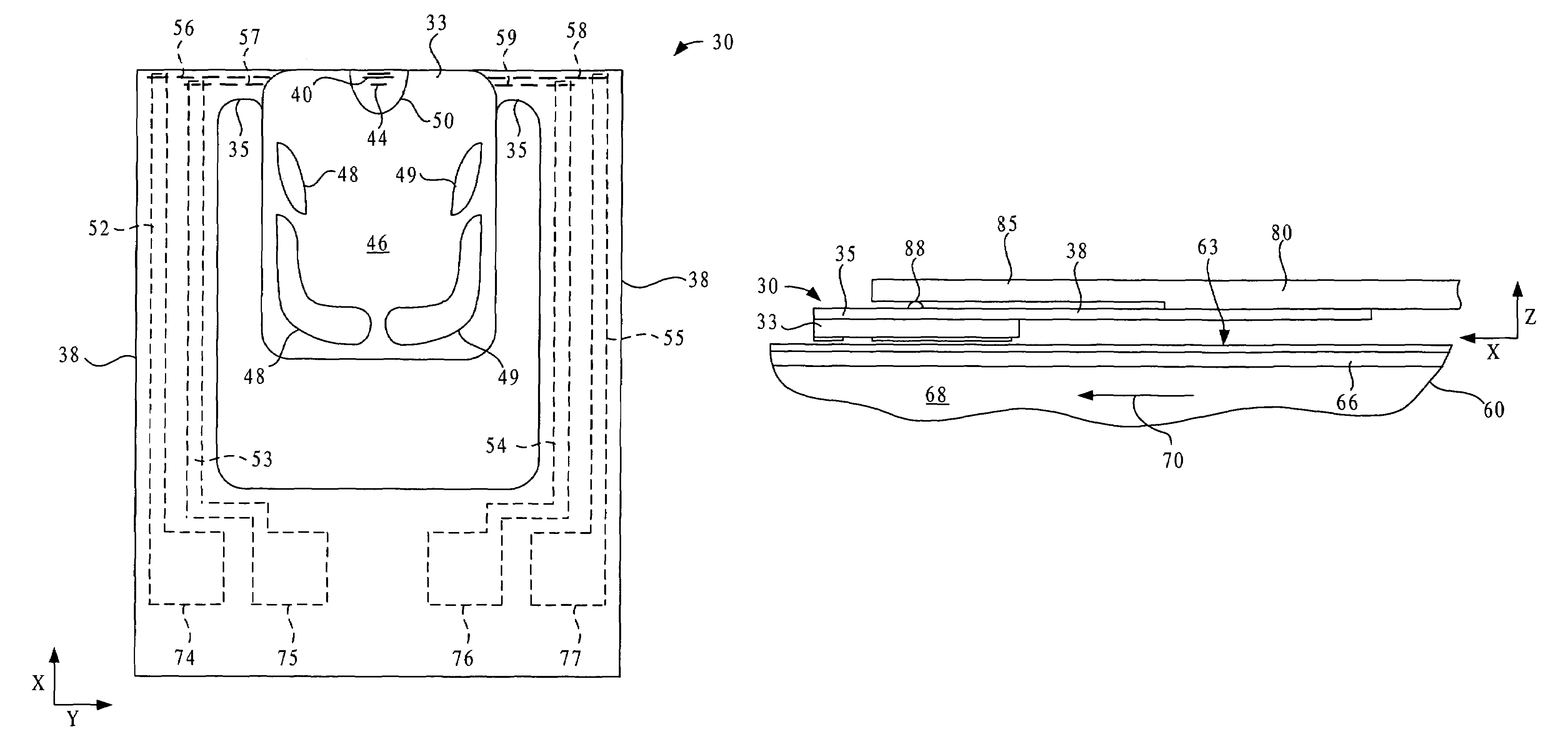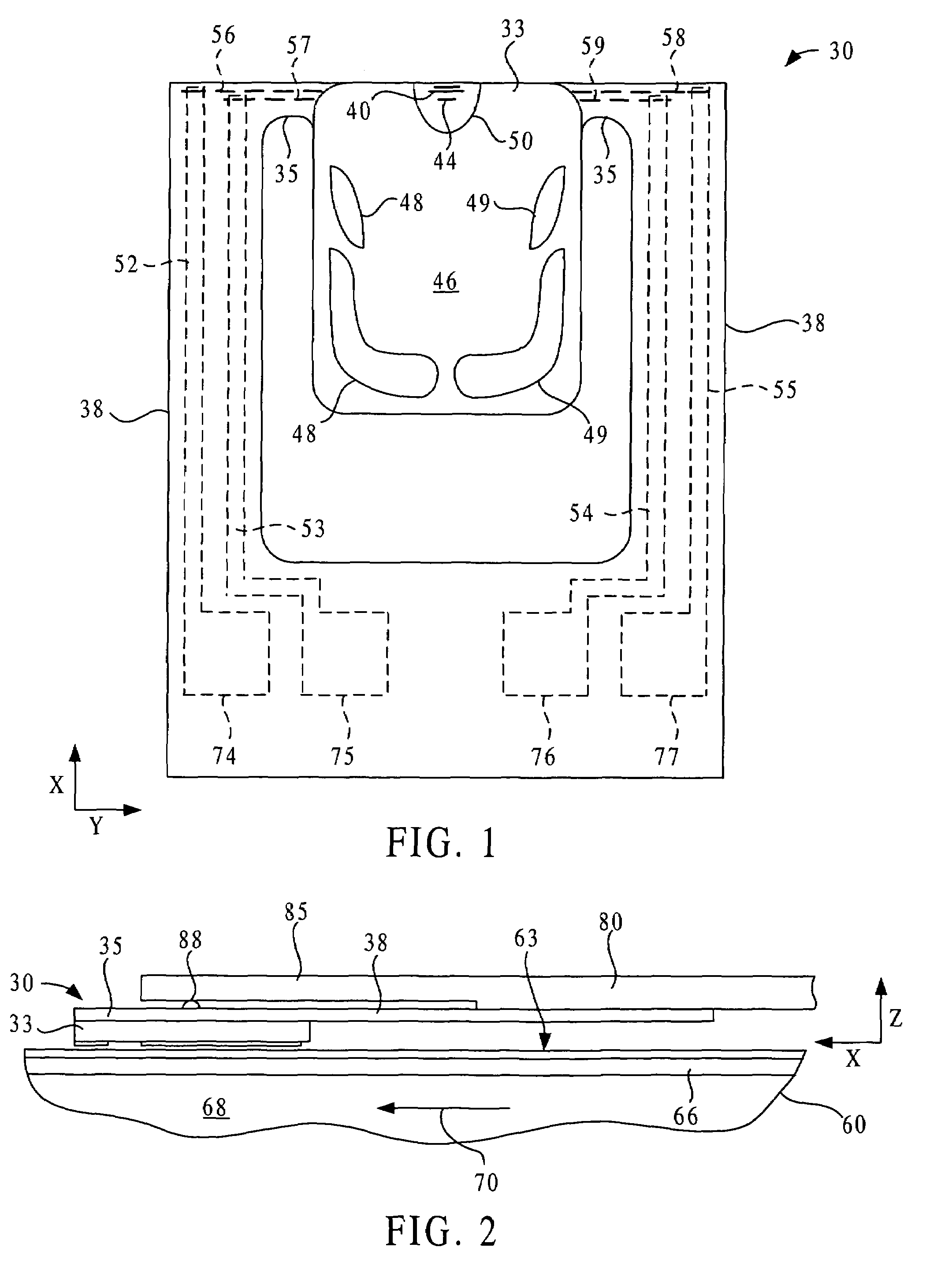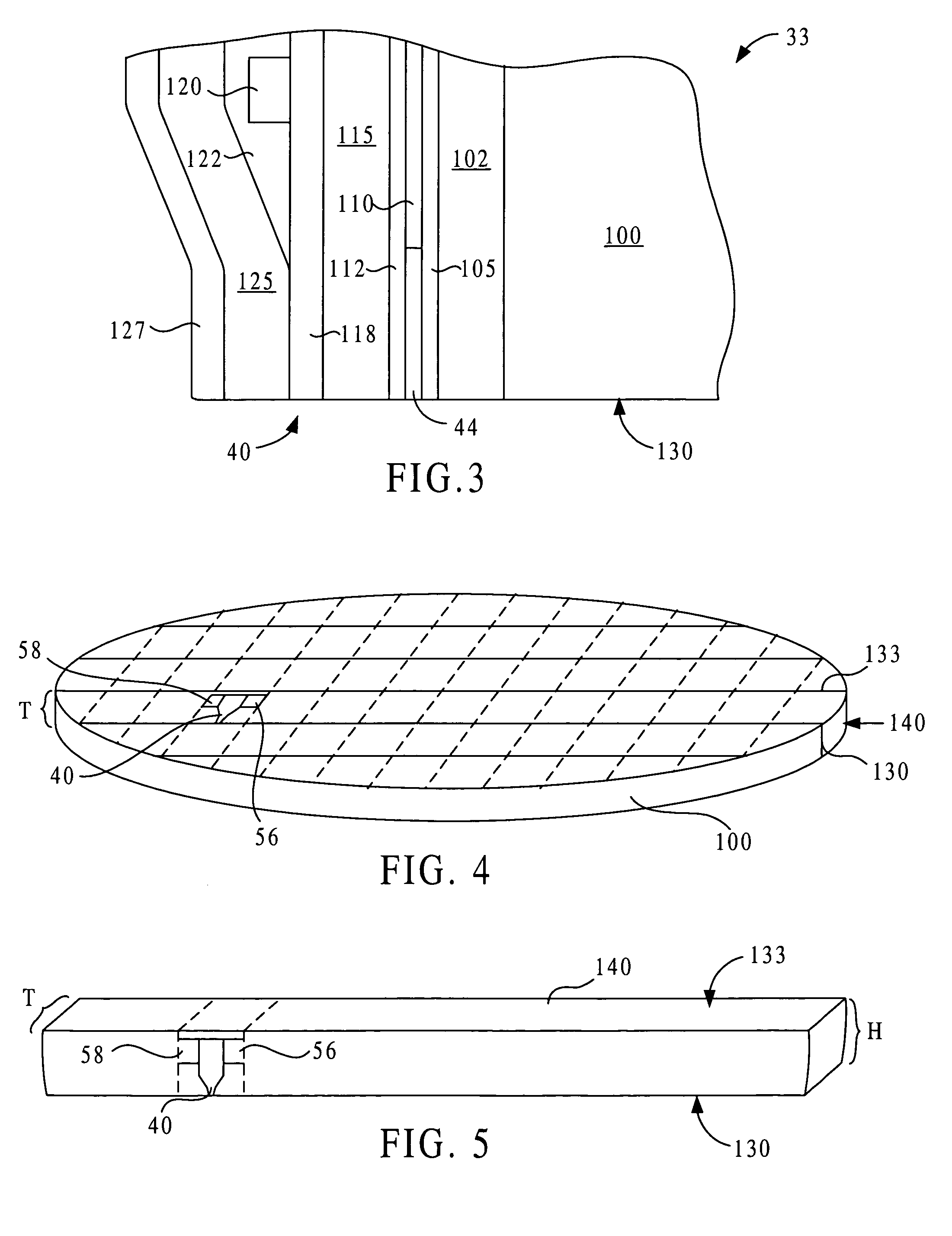Electromagnetic heads, flexures, gimbals and actuators formed on and from a wafer substrate
a technology of gimbals and actuators, which is applied in the field of gimbals and flexures, can solve the problems of reducing the accuracy of gimbals, reducing the mass and moment arms of gimbals, and destroying sensors, etc., so as to increase the accuracy, and reduce the mass and moment arms
- Summary
- Abstract
- Description
- Claims
- Application Information
AI Technical Summary
Benefits of technology
Problems solved by technology
Method used
Image
Examples
Embodiment Construction
[0040]FIG. 1 shows a media-facing side of a device 30 of the present invention including an integrated head 33, gimbal 35 and flexure 38. The head 33 includes an inductive transducer 40 and a magnetoresistive (MR) transducer 44, although other types of transducers may alternatively be employed. As will be explained in greater detail below, the transducers 40 and 44 are formed along with many other similar transducers on a wafer substrate, after which the wafer is cut into rows each containing a number the transducers, and the rows are then processed from another direction to form the integrated head 33, gimbal 35 and flexure 38.
[0041]A media-facing surface 46 of the head 33 includes rails 48 and 49 and a transducer-containing pad 50 that are designed to be closer than the remainder of the media-facing surface to the media during operation. The rails 48 and 49 and pad 50 may project about a micron or less from the remainder of the bearing surface 46. The gimbal 35 and flexure 38 are ...
PUM
| Property | Measurement | Unit |
|---|---|---|
| thickness | aaaaa | aaaaa |
| height | aaaaa | aaaaa |
| temperatures | aaaaa | aaaaa |
Abstract
Description
Claims
Application Information
 Login to View More
Login to View More - R&D
- Intellectual Property
- Life Sciences
- Materials
- Tech Scout
- Unparalleled Data Quality
- Higher Quality Content
- 60% Fewer Hallucinations
Browse by: Latest US Patents, China's latest patents, Technical Efficacy Thesaurus, Application Domain, Technology Topic, Popular Technical Reports.
© 2025 PatSnap. All rights reserved.Legal|Privacy policy|Modern Slavery Act Transparency Statement|Sitemap|About US| Contact US: help@patsnap.com



